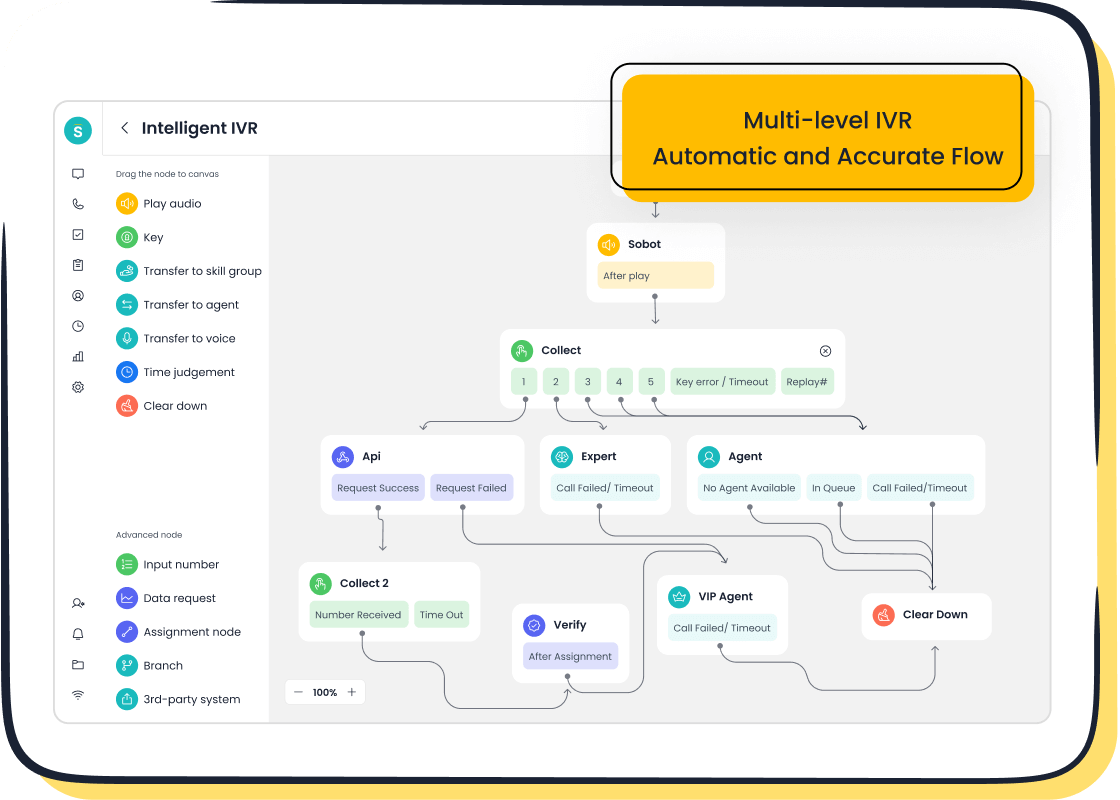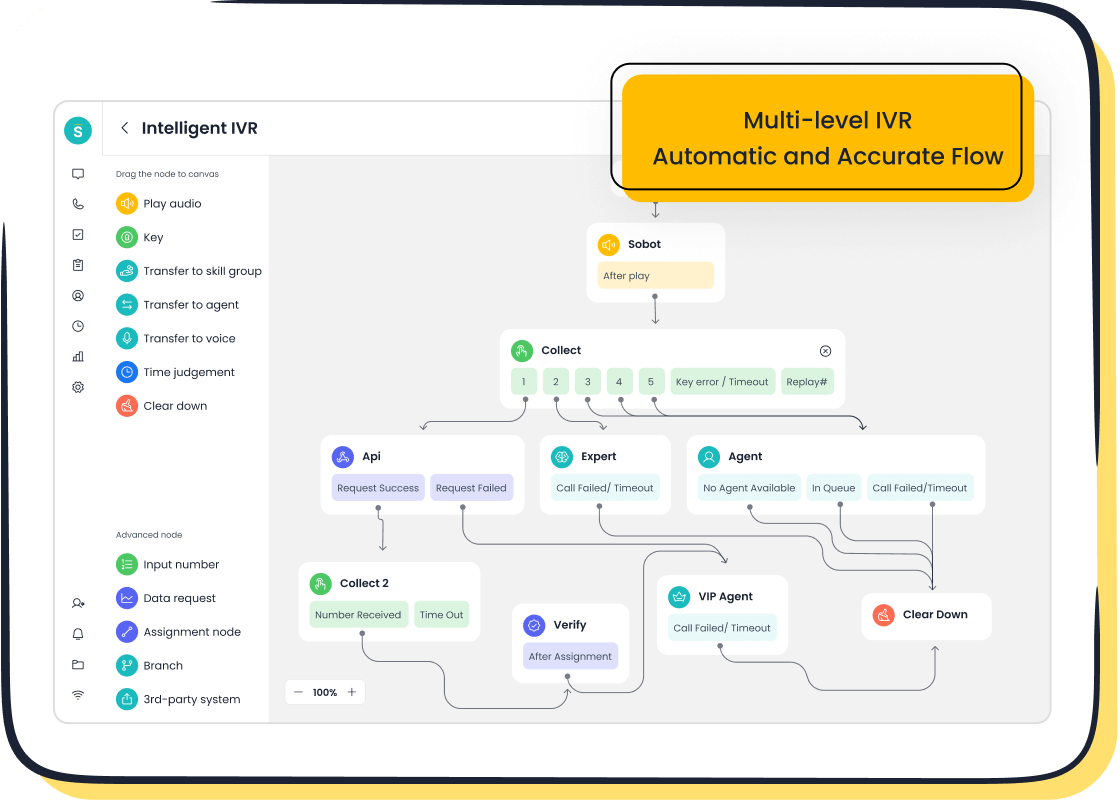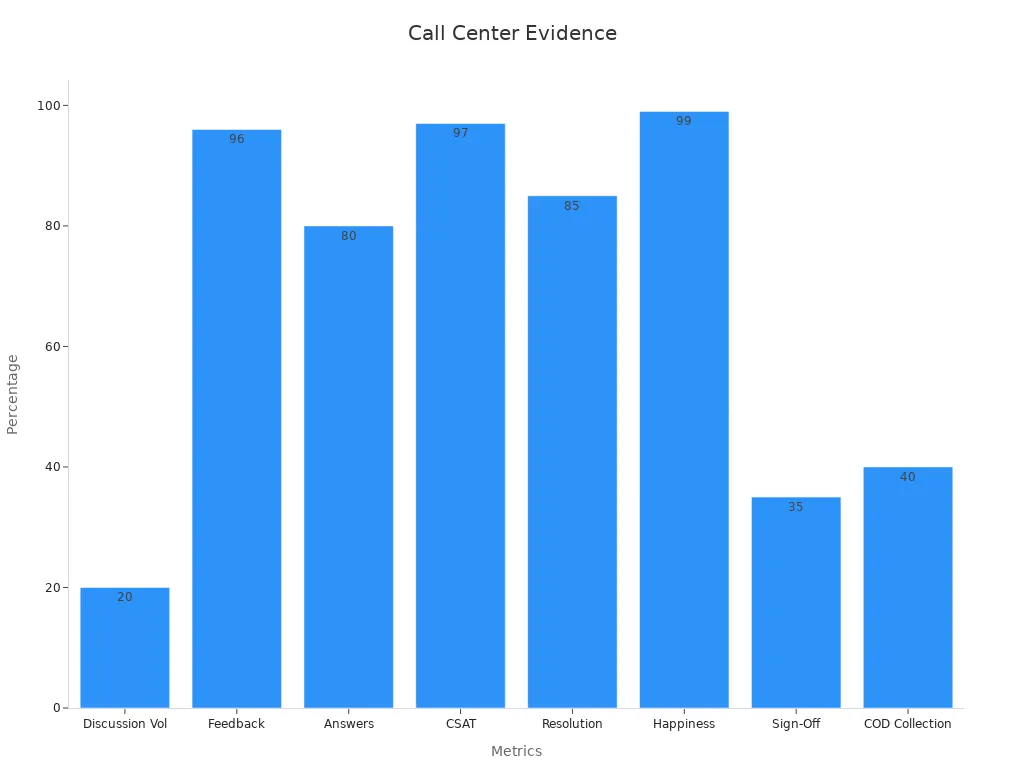How to Use NPS Feedback for Strategic Business Growth

Net Promoter Score questions give you a direct window into how customers perceive your brand, making it a powerful tool for improving customer experience. By analyzing feedback, you can uncover actionable insights that guide decisions to strengthen customer relationships and drive growth. For example, companies like Philips have demonstrated that higher NPS correlates with a 70% revenue increase, while Heineken found that promoters grow gross profit three times faster than detractors. Tools like Sobot’s solutions help you leverage NPS data effectively, enabling you to create tailored strategies that enhance satisfaction and loyalty across all touchpoints.
Understanding Net Promoter Score and Its Importance
What is Net Promoter Score (NPS)
Net Promoter Score (NPS) measures customer loyalty by asking a simple question: “How likely are you to recommend our product or service to others?” Customers respond on a scale from 0 to 10, with their answers categorized into three groups: Promoters, Passives, and Detractors. The score is calculated by subtracting the percentage of Detractors from the percentage of Promoters, resulting in a value between -100 and +100.
A good NPS score typically ranges from 0 to 30, while scores above 50 are considered excellent. Industry benchmarks vary widely, with consultancy firms often achieving higher scores due to their personalized service models. For example, in 2023, luxury auto manufacturers showed improvement in NPS despite declines in other industries. These benchmarks help businesses set realistic goals and measure their performance against peers.
How Net Promoter Score Questions Shape Customer Feedback
The structure of net promoter score questions plays a vital role in gathering meaningful customer feedback. The survey usually starts with a rating question, followed by an open-ended question that allows customers to explain their scores. This combination provides both quantitative and qualitative insights.
The simplicity of NPS questions encourages higher response rates, making the feedback more reliable. Customizing these questions based on customer categories—Promoters, Passives, and Detractors—can yield actionable insights. For instance, asking Detractors about specific pain points helps identify areas for improvement, while engaging Promoters can uncover opportunities for advocacy.

Sobot’s solutions, such as its Voice Call Center, enhance the feedback process by integrating customer data and enabling personalized interactions. Features like AI-powered Voicebots and call tracking ensure that businesses can act on feedback efficiently.
Categorizing Customers: Promoters, Passives, and Detractors
Understanding the three customer categories is essential for leveraging NPS effectively:
- Promoters (9-10): These customers are highly satisfied and likely to recommend your brand. They drive growth through referrals and repeat purchases.
- Passives (7-8): Passives are neutral. They may not actively promote your brand but are less likely to switch to competitors.
- Detractors (0-6): Detractors are dissatisfied customers who can harm your brand’s reputation through negative word-of-mouth.
For example, survey data shows that when NPS is 5, Detractors make up 10%, Passives account for 75%, and Promoters represent 15%. By addressing the concerns of Detractors and engaging Passives, you can shift the balance toward Promoters, improving your overall score.
Sobot’s marketing solutions help businesses target these groups effectively. Tools like WhatsApp API and SMS campaigns enable personalized outreach, turning Passives into Promoters and reducing churn among Detractors.
Analyzing NPS Data for Actionable Insights

Identifying Key Drivers of Customer Satisfaction
To improve your net promoter score, you need to understand what drives customer satisfaction. Analyzing NPS data helps you pinpoint the factors that influence how customers perceive your brand. Tools like summary statistics and correlation matrices reveal relationships between customer feedback and satisfaction levels. Advanced methods such as Key Driver Analysis and regression modeling uncover deeper insights into what matters most to your customers.
Visualization tools like quad maps and interactive dashboards make it easier to interpret NPS survey results. For example, quadrant analysis can show which aspects of your product or service are performing well and which need improvement. By identifying these key drivers, you can focus your efforts on areas that will have the greatest impact on your NPS program.
Sobot’s Voice Call Center enhances this process by providing real-time monitoring and analysis of call data. Features like AI-powered Voicebots and call tracking allow you to gather actionable insights from customer interactions, helping you make data-driven decisions that improve satisfaction across the customer journey.
Segmenting NPS Survey Data for Better Understanding
Segmenting NPS survey data allows you to understand different customer groups more effectively. By dividing your audience into smaller segments, you can tailor strategies to meet their unique needs. Common segmentation models include demographic segmentation for B2C companies, firmographic segmentation for B2B businesses, and behavioral segmentation based on loyalty or spending levels.
| Segmentation Type | Description |
|---|---|
| Demographic Segmentation | Crucial for B2C companies, providing insights based on age, gender, and location. |
| Firmographic Segmentation | Essential for B2B companies, focusing on industry type, company size, and revenue. |
| Behavioral Segmentation | Analyzes customer attributes like loyalty and spending levels to understand satisfaction drivers. |
For example, analyzing NPS scores by age group might reveal that younger customers value speed and convenience, while older customers prioritize personalized service. Sobot’s marketing solutions, such as WhatsApp API and SMS campaigns, enable you to target these segments with tailored outreach, turning insights into actionable strategies.
Spotting Trends and Patterns in Customer Feedback
Spotting trends in NPS data helps you anticipate customer needs and address issues before they escalate. Regularly sending NPS surveys, such as every 90 days, allows you to monitor satisfaction over time. Tagging and categorizing qualitative responses highlight common pain points, while root cause analysis methods like "The 5 Whys" uncover underlying issues.
Patterns among Promoters, Passives, and Detractors provide valuable insights. For instance, Promoters may frequently mention product quality, while Detractors might focus on poor customer service. Cross-referencing NPS responses with product usage analytics reveals how customer behaviors align with satisfaction levels.
Sobot’s unified workspace simplifies this process by integrating customer data from multiple channels. With features like real-time dashboards and AI-powered analytics, you can identify trends quickly and implement changes that enhance the customer journey. This proactive approach ensures your NPS program drives continuous improvement and long-term growth.
Strategic Applications of NPS Feedback for Growth

Leveraging Promoters for Referrals and Advocacy
Promoters, your most loyal customers, are invaluable for driving growth. They actively recommend your brand, creating organic advocacy that boosts your reputation and attracts new customers. Encouraging these customers to share their positive experiences can amplify your reach. For example, Emily, a loyal customer, promoted Company B’s eco-friendly practices on social media, inspiring her followers to switch to their products. Similarly, Linda referred her neighbor to a subscription service, earning both a free month of access.
You can incentivize promoters through referral programs, exclusive offers, or recognition. Sobot’s marketing solutions, such as WhatsApp API and SMS campaigns, make it easy to engage promoters with personalized messages. These tools help you track referrals and measure their impact on your net promoter score. By leveraging promoters effectively, you can turn their enthusiasm into measurable business outcomes.
| Example | Description |
|---|---|
| Emily | Promoted eco-friendly practices on social media, inspiring followers. |
| John | Resolved issue led to him advocating for the brand in online forums. |
| Linda | Referred a neighbor, resulting in mutual rewards and increased loyalty. |
Addressing Detractors to Reduce Churn
Detractors pose a risk to your brand’s reputation and retention rates. Addressing their concerns promptly can transform negative experiences into positive ones. Research shows that resolving issues quickly retains 97% of customers. Additionally, closing the feedback loop increases NPS by 11 points and retention by 8.5%.

Start by identifying common pain points through NPS surveys. Use tools like Sobot’s Voice Call Center to analyze call data and uncover root causes. Personalize your approach by offering tailored solutions. For instance, structured loyalty programs and consistent communication can rebuild trust. Engaging detractors also prevents them from spreading negative word-of-mouth, reducing churn.
| Strategy | Impact |
|---|---|
| Understanding customer feedback | Identifies churn drivers. |
| Personalizing experiences | Increases satisfaction. |
| Closing the loop with feedback | Boosts NPS and retention rates. |
| Quick resolution of issues | Retains 97% of customers. |
| Engaging passive customers | Prevents them from becoming detractors. |
Engaging Passives to Turn Them into Promoters
Passives represent untapped potential. They are satisfied but not enthusiastic enough to promote your brand. Converting them into promoters requires targeted engagement strategies. Companies that follow up with passives and act on their feedback see significant improvements in their NPS.
Start by increasing feedback response rates. Use tools like Sobot’s unified workspace to manage customer interactions efficiently. Senior management involvement in addressing high-value accounts can also make a difference. For example, prioritizing detractor feedback within 48 hours often leads to higher satisfaction and loyalty.
Additionally, conduct root cause analyses to identify areas for improvement. Implementing these changes company-wide enhances the customer experience. Sobot’s AI-powered Voicebots and marketing solutions streamline this process, ensuring timely follow-ups and personalized outreach. By engaging passives effectively, you can shift them toward becoming loyal promoters.
- Engagement of detractors increases the likelihood of converting them into promoters.
- Senior management involvement in high-value accounts shows respect and builds loyalty.
- Boosting feedback response rates improves relationship management.
- Smart case management ensures timely follow-ups.
- Root cause analysis drives company-wide improvements.
Using Feedback to Enhance Products and Services
Customer feedback collected through nps surveys serves as a goldmine for enhancing your products and services. By analyzing this data, you can identify what resonates with your customers and address areas that need improvement. This process not only boosts satisfaction but also strengthens loyalty, creating a competitive edge in your market.
Steps to Leverage NPS Feedback for Product and Service Enhancement
-
Organize Data to Uncover Patterns
Begin by categorizing feedback into actionable themes. For instance, if multiple customers mention slow response times, this indicates a need to optimize your support processes. Tools like Sobot’s Voice Call Center simplify this step by integrating customer interactions into a unified workspace. Features such as call tracking and AI-powered analytics help you identify recurring issues efficiently. -
Prioritize Feedback to Shape Strategy
Not all feedback carries equal weight. Focus on insights from promoters and detractors, as these groups provide the most actionable data. Promoters highlight what works well, while detractors reveal critical pain points. For example, if detractors frequently mention difficulty navigating your app, this signals an opportunity to improve the user interface. -
Integrate Insights into the Product Roadmap
Use the feedback to guide your development priorities. For example, if customers express interest in a specific feature, consider adding it to your roadmap. Sobot’s marketing solutions, such as WhatsApp API, enable you to gather real-time feedback on new features, ensuring your updates align with customer expectations. -
Close the Feedback Loop
Inform customers about the changes you’ve made based on their input. This demonstrates that you value their opinions, fostering trust and loyalty. For instance, if you’ve improved delivery times based on feedback, share this update through email or social media. Sobot’s SMS campaigns make it easy to communicate these updates effectively.
Key Insights from NPS Data
| Insight | Description |
|---|---|
| User Feedback | NPS surveys gather user feedback on product recommendations. |
| Adoption Strategies | Data helps determine strategies for product adoption and rollout. |
| Issue Identification | Insights help identify and resolve user issues quickly. |
| User Themes | Access to top themes discussed by users. |
| User Sentiment | Identify happy and unhappy users based on feedback. |
| Platform Insights | See what operating systems or platforms users are utilizing. |
| Feedback Export | Ability to export feedback and survey data for further analysis. |
For example, a company using nps data discovered that customers valued faster checkout processes. By implementing a one-click payment feature, they saw a 25% increase in conversion rates. Similarly, Sobot’s AI-powered Voicebots can help you identify and address such trends, ensuring your products evolve to meet customer needs.
Why NPS Feedback Matters for Product Managers
NPS feedback provides a reliable measure of customer experience. It helps you track how product changes impact customer perception. For example, if a new feature receives positive feedback from promoters, this validates its success. Conversely, negative feedback from detractors highlights areas needing improvement. Respondents’ comments alongside nps scores offer valuable insights, inspiring new features and refining existing ones.

By leveraging tools like Sobot’s Voice Call Center, you can analyze feedback in real time. Features such as intelligent IVR and call monitoring ensure you capture the voice of the customer effectively. This data-driven approach empowers you to make informed decisions, enhancing both your products and services.
Tip: Regularly review your nps data to stay ahead of customer expectations. Continuous improvement ensures your offerings remain relevant and competitive.
Integrating NPS Feedback Across Business Operations
Cross-Departmental Collaboration for Customer Success
Integrating NPS feedback across departments ensures a unified approach to improving customer success. Sharing insights from NPS surveys with teams like marketing, product development, and customer service helps align strategies and eliminate silos. For example, marketing can use feedback to refine campaigns, while product teams can address specific pain points highlighted by customers.
| Approach | Description |
|---|---|
| Cross-Departmental Collaboration | Sharing feedback across teams like marketing, product development, and customer service to unify improvement strategies. |
| Actionable Roadmap | Transforming insights into specific strategies, such as improving customer service based on feedback. |
| Closed-Loop Feedback | Informing customers about changes made due to their feedback, enhancing their engagement and loyalty. |
| Regular Review Cycles | Establishing periodic meetings to assess progress and refine strategies based on ongoing feedback. |
Open communication between teams is essential for delivering exceptional customer experiences. Setting shared goals and aligning around customer-centric metrics, such as NPS, fosters collaboration. For instance, companies that establish shared KPIs across departments often see higher customer retention rates. Sobot’s unified workspace simplifies this process by integrating customer data, enabling teams to work together seamlessly and focus on customer success.
Aligning Employee Engagement with NPS Goals
Your employees play a critical role in achieving NPS goals. Engaged employees are more likely to deliver exceptional service, directly impacting customer satisfaction. Companies that connect employee engagement metrics with NPS often see improved business performance. For example, tailored surveys and data analysis can help align employee objectives with broader business goals.
- Best-practice companies link employee engagement metrics with customer metrics like NPS to enhance performance.
- Many executives recognize the importance of engagement but struggle to measure its impact.
- Prioritizing engagement through training and recognition programs boosts morale and aligns employees with customer-centric goals.
Sobot’s AI-powered Voicebots and real-time dashboards provide employees with the tools they need to address customer concerns effectively. By empowering your team with actionable insights, you can create a culture of accountability and continuous improvement.
Maintaining Focus on NPS in Customer Service Centers
Customer service centers are the frontline of your NPS strategy. Keeping a focused approach ensures that every interaction contributes to higher satisfaction and loyalty. The simplicity of the NPS rating scale makes it easy to implement and track progress.
| Feature/Benefit/Limitations | Description |
|---|---|
| Simple Rating Scale | Easy-to-understand 0-10 scoring system |
| Growth Indicator | Higher scores correlate with increased revenue |
| Industry Comparisons | Benchmark against competitors |
| Easy Implementation | Simple to set up and analyze |
| Universal Standard | Widely used across many industries |
Sobot’s Voice Call Center enhances this focus by offering features like intelligent IVR and call tracking. These tools help you monitor performance and identify areas for improvement. For example, real-time analytics can reveal trends in customer feedback, allowing you to address issues proactively. By maintaining a strong focus on NPS, your service center can drive better outcomes and strengthen customer relationships.
Tip: Regularly review NPS data in your service center to identify trends and refine your approach. Continuous improvement ensures your operations remain customer-focused and competitive.
Measuring the Impact of NPS on Business Growth
Tracking Improvements in Customer Retention and Loyalty
Higher NPS scores directly impact customer retention and loyalty. Loyal customers stay longer, spend more, and recommend your brand to others. By focusing on NPS feedback, you can identify areas that improve satisfaction and reduce churn. For example, addressing common pain points among detractors often leads to a retention boost.
The following table highlights key metrics linked to NPS improvements:
| Metric | Impact on NPS and Revenue Growth |
|---|---|
| Retention boost | Loyal customers are less likely to churn, ensuring consistent revenue streams. |
| Referrals | Promoters recommend your business, leading to cost-effective customer acquisition. |
| Upselling opportunities | Satisfied customers explore more products, driving increased spending. |
| Higher Customer Lifetime Value | Promoters stay loyal to the brand, increasing their lifetime value. |
| Reducing Costs | Retaining customers is 5-7 times cheaper than acquiring new ones. |
| Revenue from Referrals | Promoters actively recommend the brand, driving organic customer acquisition. |
Sobot’s Voice Call Center helps you track these metrics effectively. Features like call tracking and AI-powered analytics provide insights into customer interactions, enabling you to refine strategies that enhance loyalty.
Linking NPS to Revenue Growth and Market Share
NPS improvements correlate strongly with revenue growth and market share increases. Companies with high NPS scores often outperform competitors by capturing a larger share of the market. For example, technology firms with top-quartile NPS scores frequently double the market share of their closest rivals.
Key statistics supporting this correlation include:
- A 10+ point NPS increase correlates with a 3.2% upsell revenue boost.
- NPS promoters are 4.2 times more likely to renew subscriptions.
- Companies with top-quartile NPS scores achieve a 13% higher customer lifetime value (CLTV).
- A 7-point increase in NPS corresponds to a 1% revenue increase.
Sobot’s marketing solutions, such as WhatsApp API, enable you to leverage NPS data for targeted campaigns. These tools help you engage promoters and passives, driving organic growth and boosting market share.
Refining Strategies Using Sobot’s Voice/Call Center Insights
Sobot’s Voice Call Center provides actionable insights that refine your NPS strategies. By analyzing call data, you can identify trends and address customer concerns proactively. For example, real-time dashboards reveal patterns in customer feedback, helping you prioritize improvements.
Performance studies show the effectiveness of Sobot’s solutions:
| Metric | Result |
|---|---|
| Reduction in inbound discussion volume | 20% |
| Positive feedback rate | 96%+ |
| Correct answers rate | 80%+ |
| Customer satisfaction (CSAT) | 97% |
| Problem resolution rate | 85% |
| Customer happiness rate | 99% |
| Sign-off rate | 35% increase |
| COD collection rate | 40% increase |

By leveraging these insights, you can refine workflows, improve customer satisfaction, and drive better outcomes. Sobot’s AI-powered Voicebots and intelligent IVR systems ensure your strategies align with customer needs, enhancing loyalty and retention.
Net Promoter Score (NPS) feedback offers a clear pathway to strategic business growth. By focusing on improving NPS and tracking its changes, you can predict future sales growth and validate the effectiveness of your marketing efforts.
- Companies in the top NPS quartile achieve 25% higher revenue growth.
- Promoters generate 1.5 times more revenue than detractors, making them vital for sustainable success.
| Benefit Description | Implication for Business Growth |
|---|---|
| High NPS scores correlate with business growth | Promoters drive substantial revenue growth through loyalty and referrals. |
| NPS-driven referrals reduce marketing costs | Satisfied customers act as advocates, minimizing advertising expenses. |
| Declining NPS scores signal potential issues | Early detection helps address problems before they impact growth. |
Adopting a customer-centric approach ensures long-term success. Tools like Sobot’s Voice Call Center and marketing solutions simplify the process of gathering and acting on NPS feedback. By integrating these insights across your operations, you can enhance customer satisfaction, reduce churn, and uncover new growth opportunities. Start leveraging NPS today to transform your business into a growth powerhouse.
FAQ
What is the best way to collect NPS feedback?
You can collect NPS feedback through email surveys, SMS, or in-app pop-ups. Tools like Sobot’s Voice Call Center streamline this process by integrating customer interactions and enabling automated survey distribution. Regularly collecting feedback ensures you capture real-time insights to improve customer satisfaction and loyalty.
How often should you send NPS surveys?
Sending NPS surveys every 90 days works well for most businesses. This frequency helps you track trends without overwhelming customers. Sobot’s unified workspace simplifies survey scheduling and ensures timely follow-ups, allowing you to maintain consistent engagement with your audience.
Can NPS feedback improve customer retention?
Yes, addressing issues highlighted by detractors can reduce churn by up to 97%. Sobot’s AI-powered Voicebots analyze feedback to identify pain points, enabling you to resolve problems quickly. This proactive approach strengthens customer relationships and boosts retention rates.
How does NPS feedback impact revenue growth?
Higher NPS scores correlate with increased revenue. For example, a 10-point NPS improvement can boost upsell revenue by 3.2%. Sobot’s marketing solutions, like WhatsApp API, help you engage promoters effectively, turning their advocacy into measurable business growth.
How can Sobot help with NPS feedback analysis?
Sobot’s Voice Call Center offers real-time dashboards and AI-powered analytics to analyze NPS feedback. Features like call tracking and intelligent IVR uncover trends and root causes, helping you make data-driven decisions that enhance customer satisfaction and drive strategic growth.
See Also
Enhancing Call Center Efficiency Through Effective Monitoring Techniques
Improve SaaS Customer Support Using Live Chat Solutions
Comparative Analysis of Leading Voice of Customer Tools
Essential Practices for Effective Call Center Quality Management
